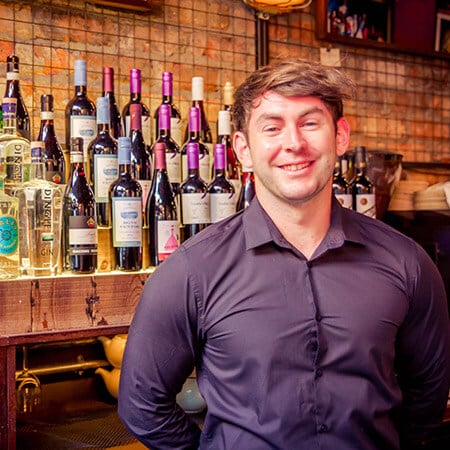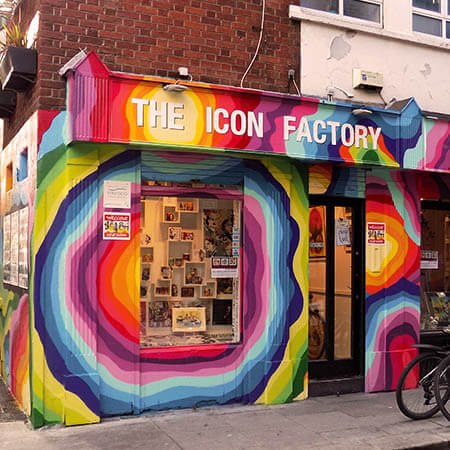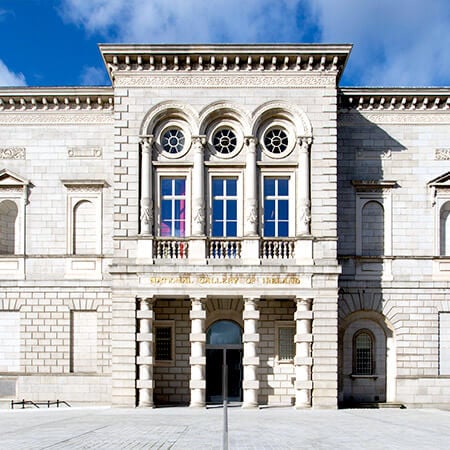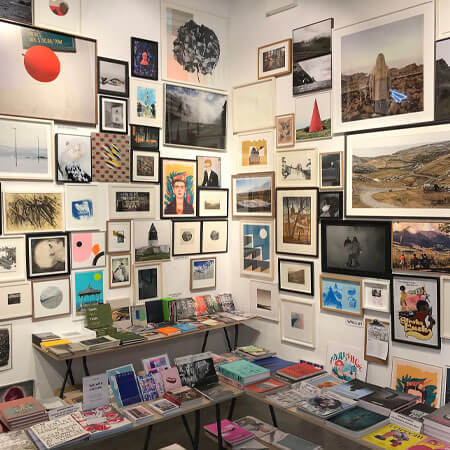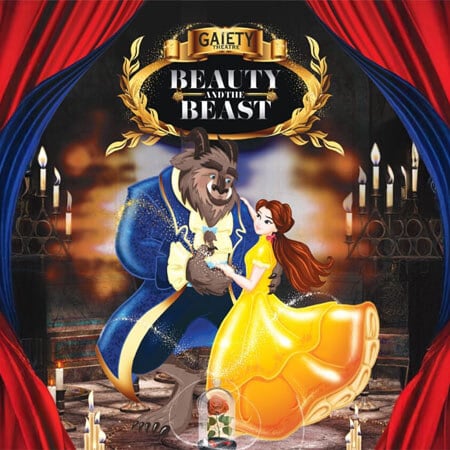The Book of Kells in Trinity is arguably Dublin’s most famous work of art, but what about all the famous Irish paintings and other international works of art in Dublin galleries?
Here are ten of the major artworks hiding behind the doors you walk past every day.
In the National Gallery of Ireland:
With entrances on both Merrion Square and Clare Street, the National Gallery is the leading home of art in Dublin – and in Ireland. With the exception of some special exhibitions, admission is free for all. Here are just four of the masterpieces you can see on display there.
1. Caravaggio – The Taking of Christ
Caravaggio painted this dramatic scene of the arrest of Jesus in 1602 for the Roman Marquis Ciriaco Mattei. Judas identifies Christ with a kiss and the guards move in. The darkness of the painting is lit by the moon. We also see a lantern held by the man on the right, which is considered to be a self-portrait of Caravaggio himself.
This painting was a well-documented commission but, after it was sold in 1802, its whereabouts became unknown. For 200 years, people considered it lost. Then, in 1987, it was discovered in the dining room at the Jesuit House on Dublin’s Leeson Street. It was there since 1930, but everyone assumed it was just a copy.
However, the removal of layers of dirt and varnish revealed it to be the original. It is now on indefinite loan to the National Gallery from the Jesuit Community and is one of the most famous pieces of art in Dublin.

Michelangelo Merisi da Caravaggio (1571-1610) The Taking of Christ, 1602 Oil on canvas. Photo © National Gallery of Ireland
2. Jack B. Yeats – The Liffey Swim
This expressionist painting from 1923 captures the excited crowd attending The Liffey Swim – an annual swimming event that continues in Dublin to this very day.
The scene shows the vantage point of ordinary spectators who lined the city’s river, leaning over the walls to catch a glimpse of the race.
Interestingly, it was for this painting that Yeats won a silver medal in the Olympic games which – between 1912 and 1948 – featured artists, as well as athletes. The catch? All the art had to depict sporting scenes.
Yeats also painted himself into the scene. He is the man in the brown fedora, while his wife Cottie is the lady in the yellow hat. It’s also worth noting that the bridge in the distance is O’Connell Bridge.

3. JMW Turner – A Ship Against the Mew Stone, at the Entrance to Plymouth Sound
Every year, for January only, Turner’s watercolours go on display at the National Gallery. In accordance with the stipulations of art collector Henry Vaughan, who bequeathed 31 of his paintings and sketches to the gallery in 1900, this is when the natural light levels are lowest.
Painted in 1814, this particular Turner painting depicts the drama of a ship as it battles the roiling sea to pass the Mew Stone – where many lives had been lost.
The English Romantic painter was relentless in his pursuit of light and atmosphere. He became known as a master of capturing the energy of storms at sea. At the age of 67, he is said to have tied himself to the mast of a ship during a storm to experience the elements directly.

Joseph William Mallord Turner (1775-1851) A Ship against the Mewstone, at the Entrance to Plymouth Sound, c.1814. Watercolour with white highlights and scraping-out on cream wove card Photo. © National Gallery of Ireland
4. Claude Monet – Argenteuil Basin with a Single Sailboat
The famous French impressionist painted this autumn scene in 1874 during his residence at Argenteuil on the banks of the Seine. Here, he painted from a boat which he used as a floating studio.
The painting is worth €10 million. Rather shockingly, in 2012, a visitor to the gallery punched the painting in an act of vengeance against the state. The incident resulted in an extensive tear but, after eighteen months of restoration, the piece was returned to the National Gallery where it is now displayed behind glass. The culprit was jailed for five years.

Claude Monet (1840-1926) Argenteuil Basin with a Single Sailboat, 1874. Oil on canvas Photo © National Gallery of Ireland
In the Hugh Lane Gallery:
In an 18th century mansion on Parnell Square, art lovers will find the Dublin City Gallery The Hugh Lane. It is just a short walk from Dublin’s O’Connell Street and is the home of contemporary art in Dublin.
Admission to the gallery is free and here are just two pieces of famous Irish artwork worth seeing there.
*The Hugh Lane Gallery closed its doors to the public on 28th September 2025 to facilitate renovations. It is expected to remain closed for at least 3 years.
5. Francis Bacon’s Studio
Arguably a work of art in its own right, this was the studio at 7 Reece Mews, South Kensington in London, which was Bacon’s home for the last 30 years of his life. In 1998, after his death, it was deconstructed and painstakingly moved piece by piece across the Irish Sea to its new home in the Hugh Lane Gallery.
Time stands still inside this climate-controlled room. The colourful chaos still looks fresh – half painted canvases line the floor and walls, alongside stiff old brushes and a cracked mirror that Bacon used to paint self-portraits.
Outside, interviews with Bacon play on large television screens. Seven of his artworks also hang in the gallery, including an unfinished self-portrait found on his easel when he died.

7 Reece Mews Francis Bacon Studio. Photograph: Perry Ogden Collection: Dublin City Gallery The Hugh Lane. © The Estate of Francis Bacon. All rights reserved, DACS.
6. Louis le Brocquy – Child in a Yard
With its sinister undertones of isolation and loss, Child in a Yard is an oil on canvas work which forms part of ‘The Grey Period’ of le Brocquy’s paintings. These pieces all depict a stark post-WWII world.
According to Le Brocquy: “Art is neither an instrument nor a convenience, but a secret logic of the imagination. It is another way of seeing.”
He often collaborated with Irish writers Séamus Heaney and Samuel Beckett and is considered by many to be the most influential figure in 20th century Irish painting.

Louis le Brocquy, Child in a Yard, 1953. Oil on canvas, 132 x 96.5cm. Presented by Mr and Mrs Bomford, 1967 Dublin City gallery The Hugh Lane. © Estate of Louis le Brocquy
In the Áras:
Áras an Uachtaráin – or the president’s house – in the Phoenix Park is home to stunning paintings, which depict scenes and key figures from Irish history. Visitors will get to see these famous Irish paintings, as well as the house’s classical-style architecture and beautiful gardens.
7. Sarah Purser – Maud Gonne
You can catch this 1898 depiction of Maud Gonne and her pet monkey on one of the free tours that run almost every Saturday of the year. It is an arresting almost life-size portrait depicting Gonne’s playful side.
Sarah Purser had a hand in the establishment of the Hugh Lane Gallery and worked mainly as a portrait artist. Her belief that Ireland could regain its national self-sufficiency in the arts put her in sympathy with some of the ideals of longtime friends, such as Maud Gonne.
She went on to paint many of the other revolutionary figures who helped change the course of Irish history.

Collection: Dublin City Gallery The Hugh Lane
In IMMA:
The Irish Museum of Modern Art in Kilmainham is the country’s leading institution for the collection and exhibition of modern art. Based in an old 17th century hospital for retired soldiers, visitors can also learn a little bit about Irish history and enjoy the site’s striking architecture and beautiful gardens too.
8. Louise Bourgeois – Untitled
Created in 2001, the same year that Bourgeois turned 90, this untitled piece is made of soft pink material taken from one of the artist’s jackets. It is one of seven unique fabric heads, which redefine classical bust sculpture.
All of these life-sized busts are trapped inside glass display cases, which Bourgeois called cells. They support the disembodied heads and are common in Bourgeois’ work, which spanned seven decades and several artistic movements, including Surrealism and Minimalism. Though she engaged with them all, none of these movements adequately describe her work.
IMMA received this piece after it staged the Louise Bourgeois: Stitches in Time exhibition. Today, it is on display as part of IMMA’s current collection exhibition.

Louise Bourgeois, Untitled, 2001, pink fabric and aluminum, stainless steel, glass and wood vitrine. IMMA Collection, Donation 2005.
In The Green Gallery:
The Green Gallery is a contemporary commercial gallery based on the quiet top floor of the Stephen’s Green Shopping Centre, just off Dublin’s Grafton Street. Since 1995, it has shown the work of talented Irish and international artists.
9. Jim Fitzpatrick – Lugh The Il-Dána 1979
Dubliner Jim Fitzpatrick is one of Ireland’s leading contemporary artists. He is probably best known for his iconic two-tone portrait of Che Guevara, which dates back to 1968. He has portrayed many other famous Irish people, including Rory Gallagher, Phil Lynott, James Plunkett and Countess Markievicz.
However, he is also known for his elaborate and detailed artworks inspired by Celtic lore. Lugh The Il-Dána 1979 shows the mythical warrior god Lugh preparing for battle. He draws his magical sword as he chants to his ancestors. This, along with many of Fitzpatrick’s other prints, can be seen at The Green Gallery.

Jim Fitzpatrick, Lugh The Il-Dána 1979. The Green Gallery.
On the street:
10. Maser – U ARE ALIVE*
Maser is one of Ireland’s best known street artists and on the corner of Grantham Street and Camden Street in Dublin 8, you’ll find one of his most beloved artworks. It boldly declares U ARE ALIVE. But there is more to this colourful statement than first meets the eye. It is also a reminder of the city’s recent social history.
During the lead up to Ireland’s 2016 Marriage Equality referendum, which legalised same-sex marriage by popular vote, the mural was updated to include the colours of the pride flag.
Maser’s street art is strongly influenced by typography and sign painting. It often contains positive political messages and has a go at “interrupting the landscape” too.

If you want to discover more famous Irish artwork, check out our guide to Dublin’s art galleries.
